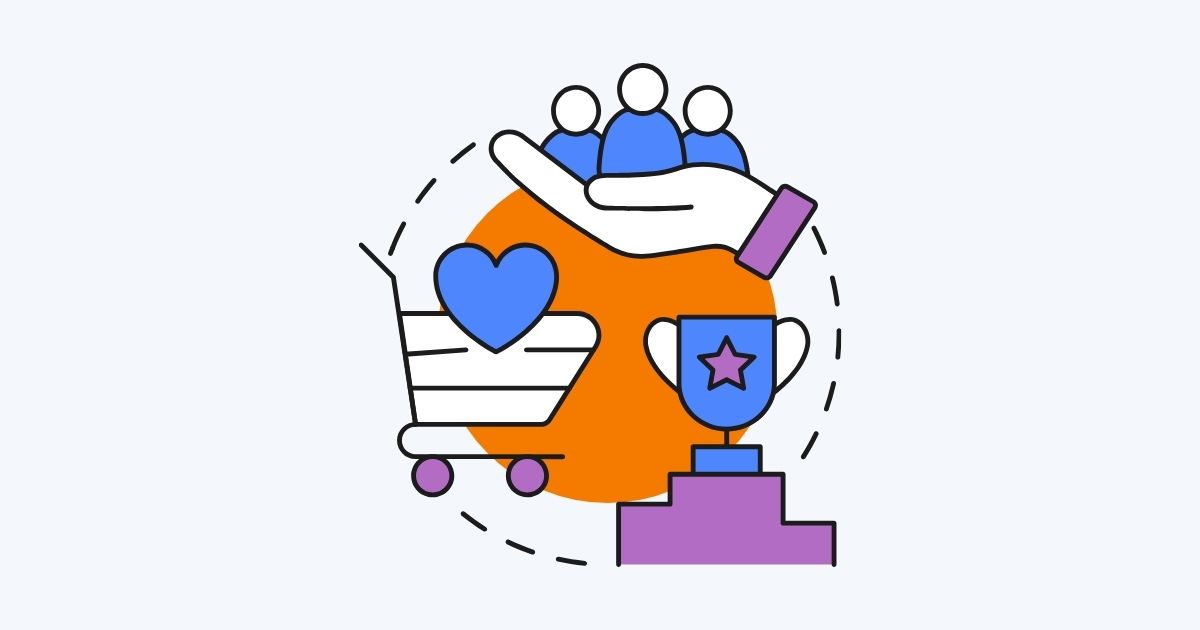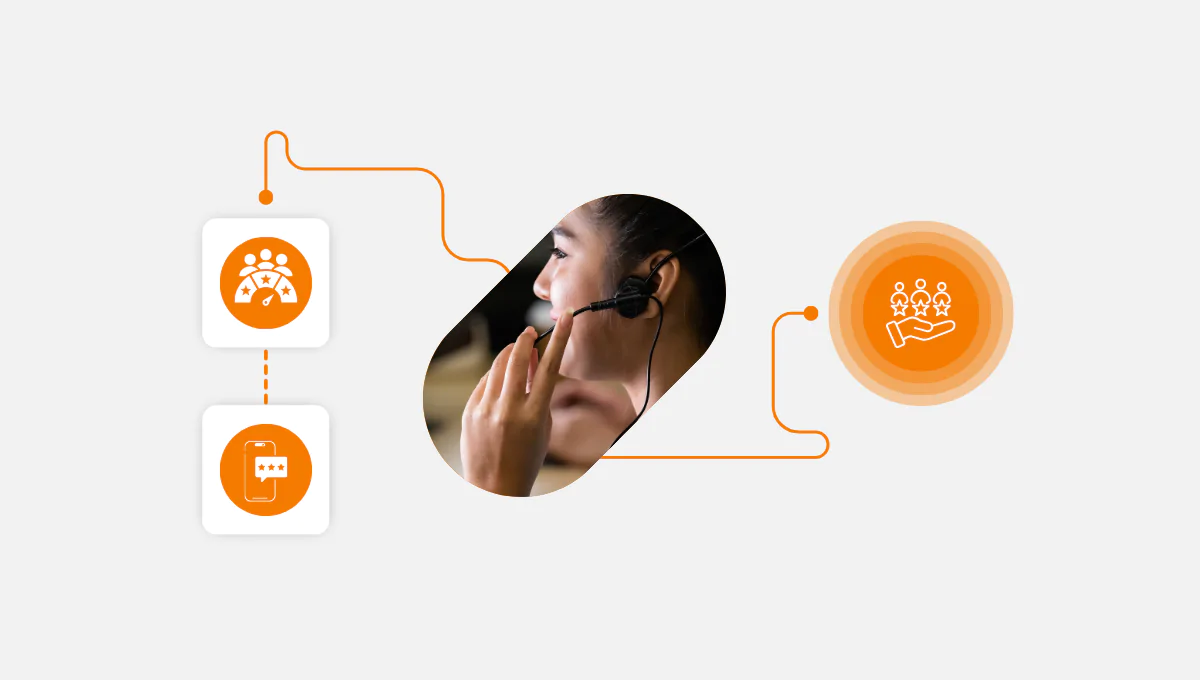Customer satisfaction score, or CSAT, measures how pleased clients are with your business offerings. When the scores are high, it means you align expectations with reality. It also means your customer experience, product/service quality, and support are top-tier.
So, what does a low score mean?
It means that one of the above departments is failing. If the scores stay low, expect low sales, lower customer retention, and overall business downfall.
But here is the saving grace:
You can improve your CSAT score to retain clients using cloud call center software. Call Center Studio offers you the best. You’ll find value in reading this piece if you want to boost your contact center CSAT scores.
Ready?
Let’s go.
What Is The Meaning Of CSAT Test?
The meaning of a CSAT test lies in the results and what they project. High scores highlight positive experiences, while low scores indicate subpar ones.
The following are the departments that CSAT scores impact in a contact center. We’ve matched the service with a question. The answers are either a yes (high scores) or a no (low scores).
- Customer experience: Is the customer journey smooth?
- Service/product quality: Does the service or product meet client needs?
- Agent performance: Are the agents working at their best?
- Customer loyalty: Does your brand have a loyal following?
- Feedback: Are the feedback insights you get impactful?
- Operational efficiency: Do all the software, tools, and systems work in your favor?
If you answered yes, your CSAT scores should be high. If the answer is no, keep reading to learn how to improve them.

How is CSAT Measured?
Before improving CSAT scores, here is the breakdown of how to measure CSAT.
Scrutinize the Customer Journey
Start by outlining the customer journey marking all the client touchpoints. If you’re on an omnichannel contact center plan, this includes calls, emails, and more. Highlight which routes are high-traffic and the rate of resolution for each.
Design a Survey
Your first line of data collection for measuring CSAT scores is surveys. Format the customer satisfaction surveys in question forms. You can also use response scales from one to five or ten.
One indicates total dissatisfaction; ten or five mean high satisfaction.
Include follow-up questions or leave open-ended spaces for clients to give their insights. Two standard questions are“ What could we have done better?” or “ What did you appreciate most about your experience with us?”
Distribute Surveys
Time your survey deliveries after client interactions because clients are likelier to give feedback. Send the surveys using multiple channels, such as SMS, email, in-app notifications, or other sites.
Data Analyzation
After distribution comes analysis, which begins with measuring the response rate. Hold the analysis until you have enough data to give you reliable numbers. After getting reasonable feedback, calculate your CSAT scores using the following formula:
CSAT % = (Number of satisfied responses / Total number of responses) x 100

How is CSAT Improved?
Suppose you got high scores in your CSAT calculations; good job. However, if you got lower scores, here is how you can improve them:
Relearn Customer Expectations
Your customer journey map might seem perfect, but have you updated your client’s expectations? Consumers change their preferences following trends, seasons, and news. Use the surveys and their data insights to relearn their new expectations.
Train Your Agents
Onboard training on soft skills and service delivery based on the new customer expectations. Ensure your agents possess the latest skills in communication and problem-solving. Reinforce this with valuable product and process knowledge bases and resources.
Optimize Operations
Optimize operations by introducing call routing and automated self-service options. Optimizing contact center operations speed up service delivery by shortening response times. This expedited operation boosts the centre’s efficiency and productivity.
Personalize Interactions
Another sure way to boost CSAT customer satisfaction is personalizing all interactions. Use client data to tailor greetings and all customer interactions. Address the consumer by name and acknowledge the previous interaction with follow-up questions.
Personalization also entails acting on client feedback and resolving issues proactively. Customizing service this way makes the client feel valued.
What is a High CSAT Score?
The cap on CSAT scores is 100%. But as mathematics dictates, nothing is 100%. So, what is a good CSAT score for your business?
90%+: Excellent
You are in the excellent bracket if your CSAT figures are soaring at 90% and above. This shows that most of your customers are pleased with what you offer.
80% to 89%: Very Good
A ‘very good’ score is still admirable but can improve. How?
Find out what bothers that small number of dissatisfied clients and fix it. This could involve relearning their expectations or personalizing the offerings.
70% to 79%: Good
While this bracket still indicates good service, there is much room for improvement. Again, go back to the data, find the issues, and fix them.
70% and below: Poor
CSAT scores that drop below 70% require immediate resolution. If your contact centers are keying in these low numbers, head back to the drawing board and fix all the issues.
What are CSAT and NPS?
While we’ve described CSAT, there’s NPS, which measures customer loyalty. Net Promoter Score measures how likely a client will recommend the brand to others or come back.
A critical difference between CSAT vs NPS is the focus. CSAT scores concentrate on the customer experience, NPS, and overall loyalty. CSAT uses satisfaction ratings, while NPS categorizes clients. It categorizes users as detractors, promoters, or passives. The final discrepancy between the two is application. CSAT scores evaluate individual interactions or service effectiveness. NPS application is based on brand perception and awareness, which breeds loyalty.
Ready to Ump your CSAT Scores?
If you are ready, start by relearning what customers expect. Design and distribute surveys to gather this information, then analyze it. Use this data to train and empower agents with valuable skills and knowledge. Optimize your operations, too. After this, all your agents will improve by personalizing interactions boosting your CSAT scores. This will also boost your NPS scores.
Contact Call Center Studio to begin this transformation. The cloud call center software you get helps you implement all the above CSAT score boosters.




